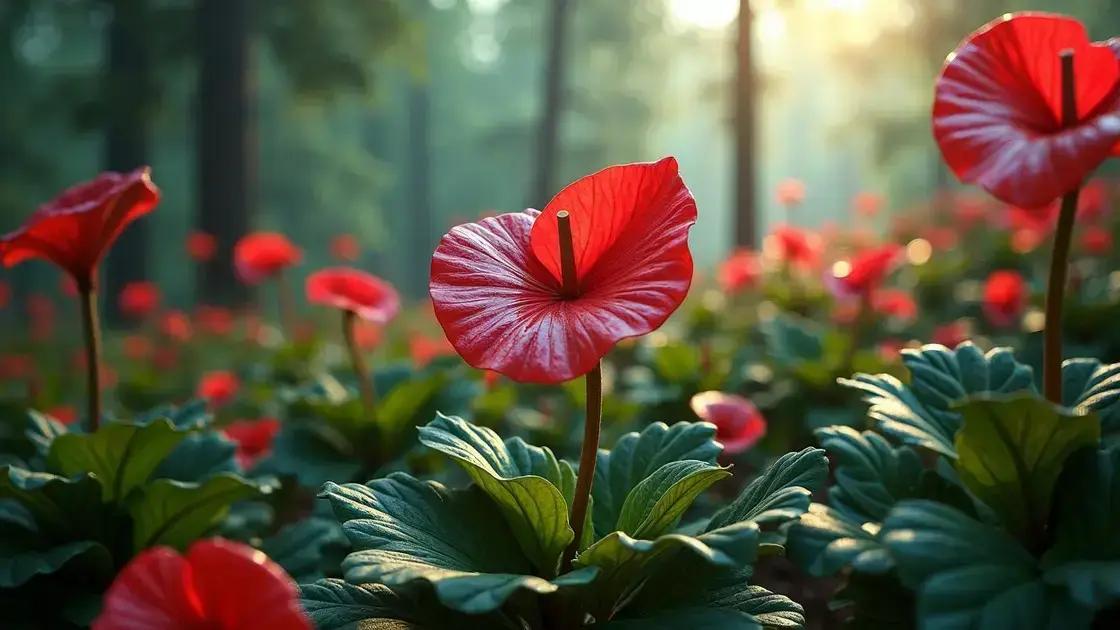How to Take Care of a Anthurium Plant: 5 Essential Tips for Success
How to take care of a anthurium plant can be a rewarding journey for plant enthusiasts. These stunning tropical plants are not just beautiful decorations; they also thrive with the right care. If you’re curious about what it takes to keep them healthy and vibrant, you’ve come to the right place. Let’s explore the vital aspects of caring for your anthurium that will ensure it flourishes in your home.
Table of Contents
ToggleUnderstanding anthurium plant watering needs
Understanding anthurium plant watering needs is crucial for maintaining the health and beauty of your anthurium. Proper watering plays a significant role in promoting vibrant blooms and lush foliage. Here’s a breakdown of how to water your anthurium effectively.
- Water frequency: Anthuriums thrive with consistent moisture. Water the plant when the top inch of soil feels dry.
- Water quality: Use distilled or rainwater to avoid chemical buildup that can harm your plant.
- Drainage tips: Ensure that your pot has adequate drainage holes to prevent soggy soil and root rot.
When watering, remember that the anthurium prefers humidity. To maintain ideal conditions, consider misting the leaves or placing a humidifier nearby.
Signs of overwatering and underwatering
It’s essential to identify whether your anthurium is receiving too much or too little water:
- Overwatering: Yellowing leaves, wilting stems, or mushy roots.
- Underwatering: Crispy leaf edges, wilting leaves, or slow growth.
Creating a watering schedule
Develop a consistent watering schedule tailored to your anthurium’s environment:
- Check soil moisture weekly.
- Adjust watering frequency based on seasonal changes.
- Monitor humidity levels in your home.
If you’re interested in enhancing your indoor gardening knowledge, consider exploring indoor gardening techniques like soil mixes that support your watering regimen.
Optimal soil and light conditions for anthuriums

Optimal soil and light conditions for anthuriums are vital for ensuring these beautiful plants thrive. Achieving the right environment can significantly enhance their growth and blooming potential.
Soil requirements for anthuriums
Anthuriums prefer well-draining soil that retains moisture without becoming soggy. Here’s a breakdown of the best soil types:
- Use a potting mix that contains peat moss, perlite, or orchid bark.
- A soil pH level between 5.5 and 6.5 is ideal.
- Consider using a ready-made blend designed for aroids.
Understanding light needs
Providing the right amount of light is crucial for your anthurium’s health:
- Anthuriums thrive in indirect sunlight. Direct sun can scorch the leaves.
- A spot near a north or east-facing window is typically optimal.
- If natural light is insufficient, consider using grow lights to supplement.
Maintaining humidity levels
Humidity plays a significant role in the well-being of anthuriums. Here are some tips for maintaining adequate moisture in the air:
- Keep humidity levels around 60%-80% for optimal growth.
- Misting the leaves regularly can help.
- Use a humidity tray or a humidifier nearby.
For those interested in deeper insights into plant care, I recommend exploring indoor gardening techniques to discover additional tips and community suggestions.
Common pests and how to treat anthurium diseases
Common pests and how to treat anthurium diseases are crucial topics for any anthurium plant owner. Identifying these issues early can prevent significant damage and help maintain the health of your beloved plant.
Identifying common pests
Anthuriums are susceptible to various pests, including:
- Spider mites: Tiny pests that create webbing on the leaves.
- Mealybugs: White, fluffy clusters often found in leaf joints.
- Scale insects: Small, round bumps that adhere to stems and leaves.
- Aphids: Small green or black insects that can be found on new growth.
Treatment options for pest infestations
Here are effective methods to treat pests on anthuriums:
- Use insecticidal soap or neem oil sprays to eliminate pests.
- Isolate affected plants to prevent the spread.
- Regularly inspect your plants and remove any visible pests manually.
Common anthurium diseases
Anthuriums can also be affected by various diseases that may compromise their health:
- Root rot: Caused by overwatering, characterized by yellowing leaves.
- Leaf spot: Fungal issues resulting in brown spots on leaves.
- Powdery mildew: A white, powdery fungus usually seen in humid conditions.
How to treat anthurium diseases
Addressing these diseases effectively involves:
- Adjusting your watering schedule to prevent root rot.
- Ensuring good air circulation to reduce humidity, which helps prevent powdery mildew.
- Using fungicides for treating fungal infections like leaf spots.
For further insights, you can also consider exploring indoor gardening techniques to enhance your plant care knowledge and community support.
In conclusion
Caring for anthuriums involves understanding their specific needs, from optimal watering and soil conditions to recognizing and treating pests and diseases. With attention to detail and a proactive approach, these vibrant plants can thrive in your indoor garden. Don’t hesitate to explore additional resources such as tips on enhancing your indoor garden to further enrich your gardening experience.

